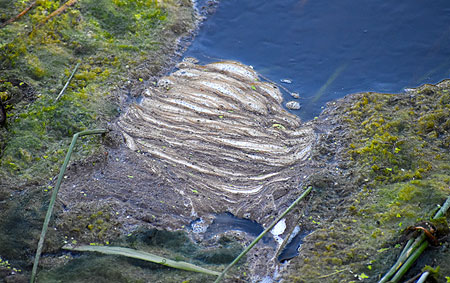Urgent action needed to curb nitrogen pollution in Ireland’s waters, says EPA.
- Ireland’s surface waters and groundwaters continue to be under pressure from human activities.
- Just over half of Ireland’s rivers and lakes are in a satisfactory condition which means that a large number are unable to sustain healthy ecosystems for fish, insects and plants.
- There has been a modest improvement in river biological quality overall with 345 rivers showing improvements and 230 rivers declining in quality.
- Nitrogen levels in rivers, groundwater, and estuaries in the south, southeast and east of Ireland are too high and increasing. This is primarily due to agricultural activities.
- Urgent and targeted action is required to reduce the amount of nitrogen entering our waters.

The Environmental Protection Agency (EPA) has today published the Water Quality in 2020: An Indicators Report which provides an assessment of the quality of Ireland’s rivers, lakes, estuaries and groundwaters.
The main threat to water quality is high nutrient levels, such as phosphorus and nitrogen which come from human activities. Many rivers, groundwaters and estuaries in the south, southeast and east of Ireland are under pressure from excess nitrogen from agricultural activities. Almost half our rivers (47%), a quarter of our groundwaters (24%) and one fifth of our estuarine and coastal water bodies (21%) have nitrogen levels that are too high. The levels impact the ability of these waters to sustain healthy ecosystems and cause nuisance algal blooms in our estuaries. High nitrogen levels, above the drinking water standard, can pose a risk to human health.
Commenting on the report, EPA Director of Evidence and Assessment, Dr Eimear Cotter said:
“Our water quality is currently under threat with nitrogen pollution from agriculture causing particular pressure in parts of the south, southeast and east of the country. Rivers such as the Bandon, Lee, Blackwater, Suir, Nore, Barrow and Slaney have nitrogen levels that are too high with significant implications for the marine environments they flow into. We urgently need to address nitrogen pollution so that we can protect and restore the water quality in these areas. If we do not substantially reduce nitrogen inputs to our rivers, and ultimately our marine environment, we are in danger of further deteriorations in water quality and losing our excellent coastal water quality.”
Just over half of Ireland’s rivers and lakes are in satisfactory biological quality which means that a large number are unable to sustain healthy ecosystems for fish, insects and plants. While there are encouraging signs of improvements in the areas prioritised for action in the River Basin Management Plan, a lot more needs to be done to improve water quality. In 2019 and 2020, 345 rivers showed improvements in quality, including an increase in the number of high-quality river sites, however, 230 rivers declined in quality.
Ms Mary Gurrie, Programme Manager, added:
“While there has been an overall net improvement in the biological quality of rivers monitored in 2019 and 2020, EPA found that 230 rivers declined in quality. It is a key requirement of the Water Framework Directive that we protect water quality and prevent deterioration. The scale of declines is off-setting the improvements and hampering progress towards improving water quality. It is essential that action is taken in both the next River Basin Management Plan and the Nitrates Action Programme to continue improvements whilst also preventing further deterioration.”
The report is available HERE on the EPA website and the accompanying data used in the water quality assessments are available on www.catchments.ie. An infographic is also available.

Leave a Reply